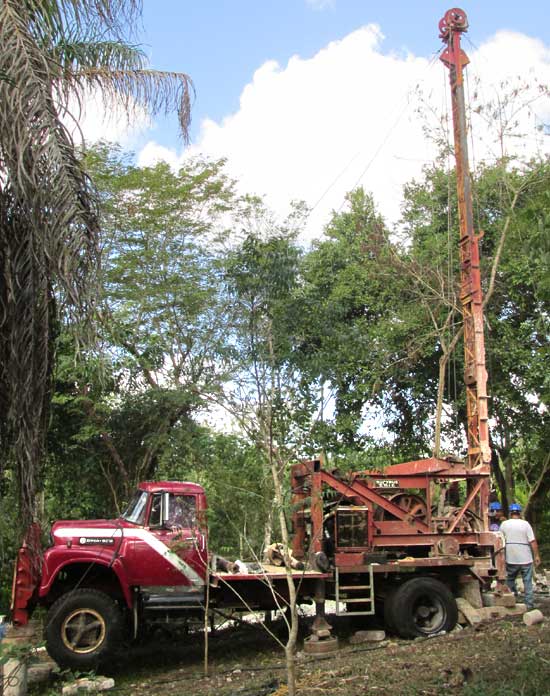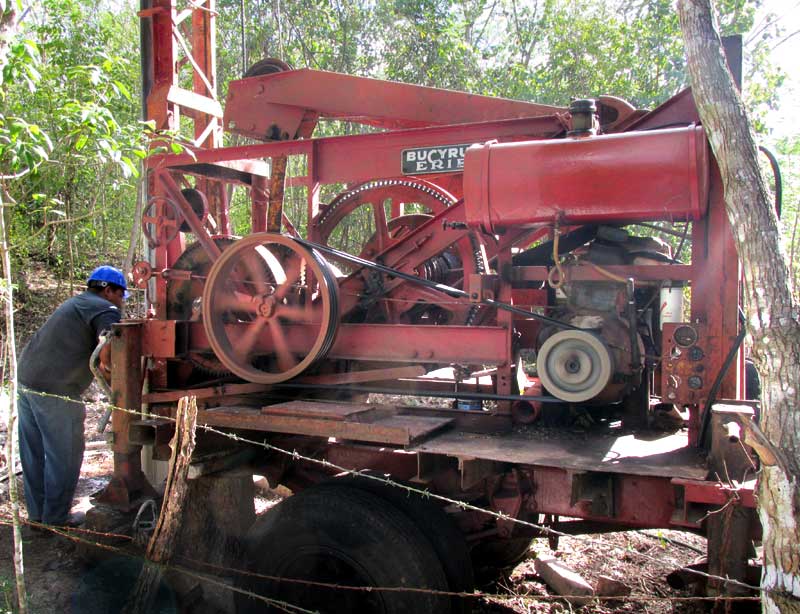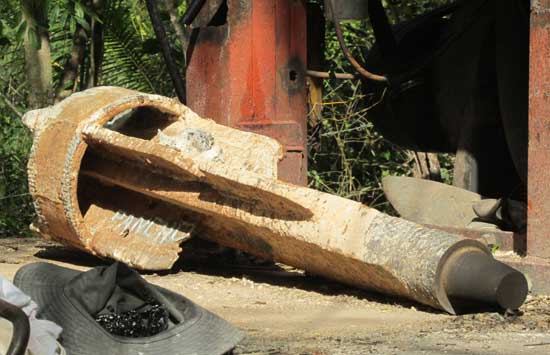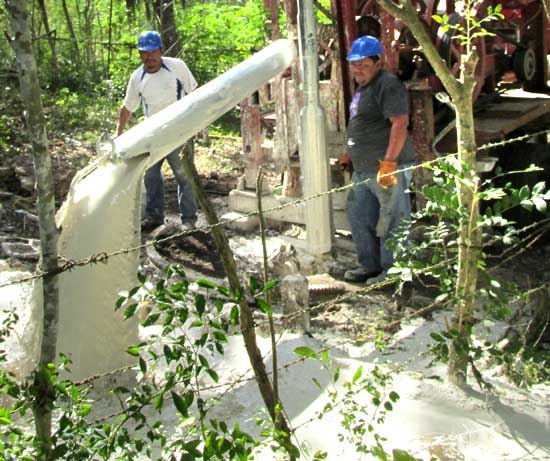Excerpts from Jim Conrad's
Naturalist Newsletter
from the January 29, 2017 Newsletter issued from Rancho Regenesis in the woods ±4kms west of Ek Balam Ruins; elevation ~40m (~130 ft), N20.876°, W88.170°; north-central Yucatán, MÉXICO
DRILLING FOR WATER
Now during the dry season we do a lot of watering at the ranch -- hundreds of Ramón (Breadnut), Neem, Moringa, Chaya, Cassava, as well as plantings of Papaya and my own garden with such things as Cilantro, various peppers, chard, purslane, amaranth and more -- all need regular waterings. Already we have two wells but a deeper, more productive one was needed, so a fellow was asked to bring in his equipment and dig a well. It was a major undertaking just to get the machinery down the rocky dirt trail leading here through the woods. Below you can see the well digging machinery

The first time I visited the diggers I was with some visitors touring the ranch. When I told the men operating the machinery that the visitors were from the US state of Ohio, one of the men's eyes got large, he put his hand on the drill's rumbling metal, and said that his drill also was from Ohio -- it had been made by the Bucyrus Erie Company. Constructed in 1950, the old well-digging machine has been providing Mexicans with wells ever since. In the above picture the flatbed truck is a fairly new model. It's just the well-digging equipment mounted on the back that's from 1950. A closer look at the cogs and belts of the equipment is shown below:

This well digger is very different from the ones we've watched in Mississippi and Texas. Those drills were equipped with bits that chewed through the rock and dirt by spinning around and around. The present one repeatedly drops a heavy, torpedo-shaped object into the steadily deepening hole. When the object crashes against the stone, it pulverizes it. You can see the torpedo-thing below:

At the bottom of the well, water combines with the pulverized rock-dust to make a kind of slurry that is dipped up and emptied onto the ground beside the well, making quite a mess. Below, you can see slurry being emptied out:

The above item slams against the well's bottom about every two or three seconds, making a sound that carries a long way. That pounding must be hard on the men standing right beside the well hour after hour. One of the men has a facial tick in which one of his eyes and cheeks flinch every two or three seconds, even when the machinery isn't operating.
The well is being dug to 50 meters (492ft). The first vein of water was encountered at about 21 meters (69ft). Below that, three other veins were encountered, and a layer of clay.